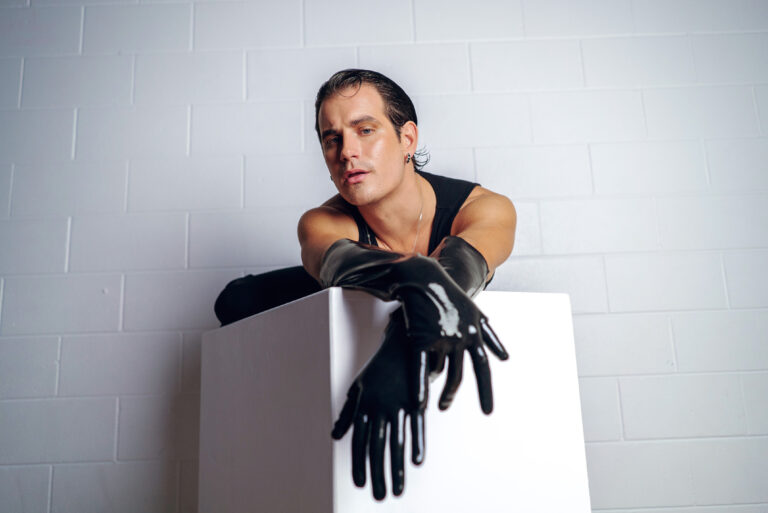How two teachers who have taken over David Howard’s ballet classes embody his spirit
After years of subbing for Howard, Pam Pribisco now teaches in his evening time slot at Steps on Broadway.
When master teacher David Howard passed away in August 2013 at age 76, New York City lost one of its most valued—and beloved—dance educators. Clapping out his combinations rhythmically, his booming yet mellifluous voice encouraged dancers to “Lengthen!” and work from a “very high place.” With a simple, specific barre and a movement-oriented center section, Howard engaged professionals (like American Ballet Theatre principal Paloma Herrera) and recreational dancers alike—with some veterans regularly showing up for class well into their 80s. After a packed class, it was common to hear students say things like, “I feel so on top of my legs—and so free.”
Many would say Howard is irreplaceable. Fortunately, due to his long tenure (after teaching for the Harkness Ballet School, he operated the David Howard Dance Center for 18 years, then moved to Steps on Broadway and Broadway Dance Center), his approach has been soaked up by teachers who continue to source his ideas. Pamela Pribisco and Mary Carpenter are two of the instructors carrying on the David Howard legacy in their own ways, the former having taken over Howard’s regular evening slot at Steps and Carpenter teaching a more basic version of his class on Fridays. (Espen Giljane also recently took over Howard’s morning slots.) DT spoke with Pribisco and Carpenter to learn what they gleaned from Howard and how they’re incorporating his gifts.
“He saw how the body really wants to move,” says Mary Carpenter. “A lot of ballet technique can be antiquated, but David’s approach was athletic and musical, and it incorporated the latest biomechanical information.”
Another Howard trademark, she notes, was his reticence to give corrections, adamant that if a teacher spoke too much, the dancer never got to try the activity. Instead, he gave brief, active cues. “I can hear his voice in my head when I’m teaching,” Carpenter says. “He would never say ‘stay’ to help a dancer balance. He would choose words like ‘lengthen,’ ‘pause’ or ‘sustain.’ The difference in the reaction of a dancer to a static word or an action is huge, and I see the proof of that constantly.”
“I can hear his voice in my head,” says Mary Carpenter about her Friday night class at Steps.
A tiny, powerful slip of a dancer, the flame-haired Carpenter trained at Cincinnati Ballet Company College Conservatory of Music Prep Department before attending Butler University. A professional dancer at many regional companies, as well as at the Metropolitan Opera and in contemporary troupes, Carpenter started teaching at 21 while dancing with the Lexington Ballet. She studied on scholarship at Howard’s studio and also completed three rounds of his teacher training.
She says Howard’s approach worked particularly well, largely because the placement and technique was built in to the exercises—no explanation needed. He achieved this by working rhythmically with the steps at the barre, often combining movements by rhythm instead of the traditional step progression, like rond de jambe en l’air combined with battements.
His tendus followed a similar logic of practical application. “He always did tendus from first before tendus from fifth,” she says. “His rationale was that first position helps dancers feel alignment, while fifth helps us feel opposition. You don’t want a dancer who’s not yet aligned to try for opposition!”
Though Carpenter adheres to many of Howard’s signatures, she does give corrections in her children’s classes. “Sometimes you need to stop and give children the information of ‘I need your tummy in,’” she says.
She also makes sure her beginner adults aren’t taxed with too many weight changes—a standard of a more advanced Howard class. Discussing alignment specifically with recreational dancers who sit at desks all day or rush around NYC is unavoidable, despite her attempt to talk “as little as possible” in class.
While Pam Pribisco has adopted Howard’s technical ideas, one first notices the influence of his classroom etiquette in her affable, engaging attitude. “He was always totally professional and cheerful, and he made no fuss over the stars in class at all. When he made corrections, he had that dry, English sense of humor, so it was always witty and funny and never abusive. Students felt that it was a safe atmosphere for learning. That made the biggest impression.”
With her hair in a ponytail, bold lipstick and jazz shoes, Pribisco cuts the figure of a modern ballet teacher. She studied with Howard in the ’80s, at the height of the ballet boom in NYC, she recalls. His class was extraordinarily musical and very organic in nature. He used words like “circular,” and the emphasis was on the natural. He arranged combinations, not to make them difficult, but to help dancers succeed—preceding an arabesque turn with a chassé, instead of a dead, static position. He made ballet accessible.
A principal dancer with the Cleveland Ballet, Pribisco became the ballet mistress there and has held that position at American Ballroom Theatre, Les Ballets Trockadero de Monte Carlo and Complexions Contemporary Ballet. Her in-depth knowledge of anatomy and her proclivity to tease out the practical application of biomechanics through straightforward kinesiology exercises are unique—especially in a ballet class that equally values fluid motion and artistry. But this combination of technique and feeling is a hallmark of the Howard legacy.
“David always said the most important relationship he had was with the musician in the room,” Mary Carpenter says. “He never micromanaged and always trusted them, and I constantly work on that connection with the pianist to create that atmosphere. David was generous with his musician—and with everyone—and I hope that my part of continuing his legacy is that I’m generous, too.”
And yet placement, anatomy, biomechanics and kinesiology are more obvious in her class than they were in Howard’s. “I find that many students, when they understand something intellectually, can make it happen more easily,” she says.
Her class has other personal touches, too, including an explanation of the basics whenever possible. “I like to spend time in January on the positions: the eight body positions, the five positions of the head, the seven movements in dancing,” she says. “These are all essential parts of the ballet system that we need to go over. They were incorporated in David’s class, but I like to review them.”
Pribisco had already started fusing her own ideas with Howard’s while subbing for his classes over the years, but as she began to take over his time slot after he died, she felt the need to follow his approach more faithfully for a time. She remembers students so overwhelmed with emotion they cried through class. Now, she focuses on his general idea of “making the body—and dancers—feel good,” she says. “Dancers always said they felt better when they left his class than when they arrived because of the organic, natural movement and encouraging atmosphere. I try to copy that. I help them dance so they can succeed at dancing. It’s not an exercise class. The only way you learn to dance is by actually dancing, and David knew that.” DT
Lauren Kay is a New York City–based dancer and writer.
Photos (top 2) by Carey Kirkella; courtesy of Dance Magazine archives


